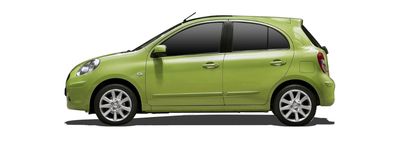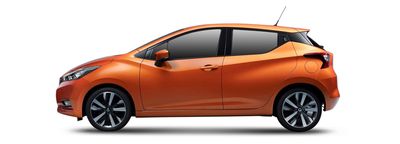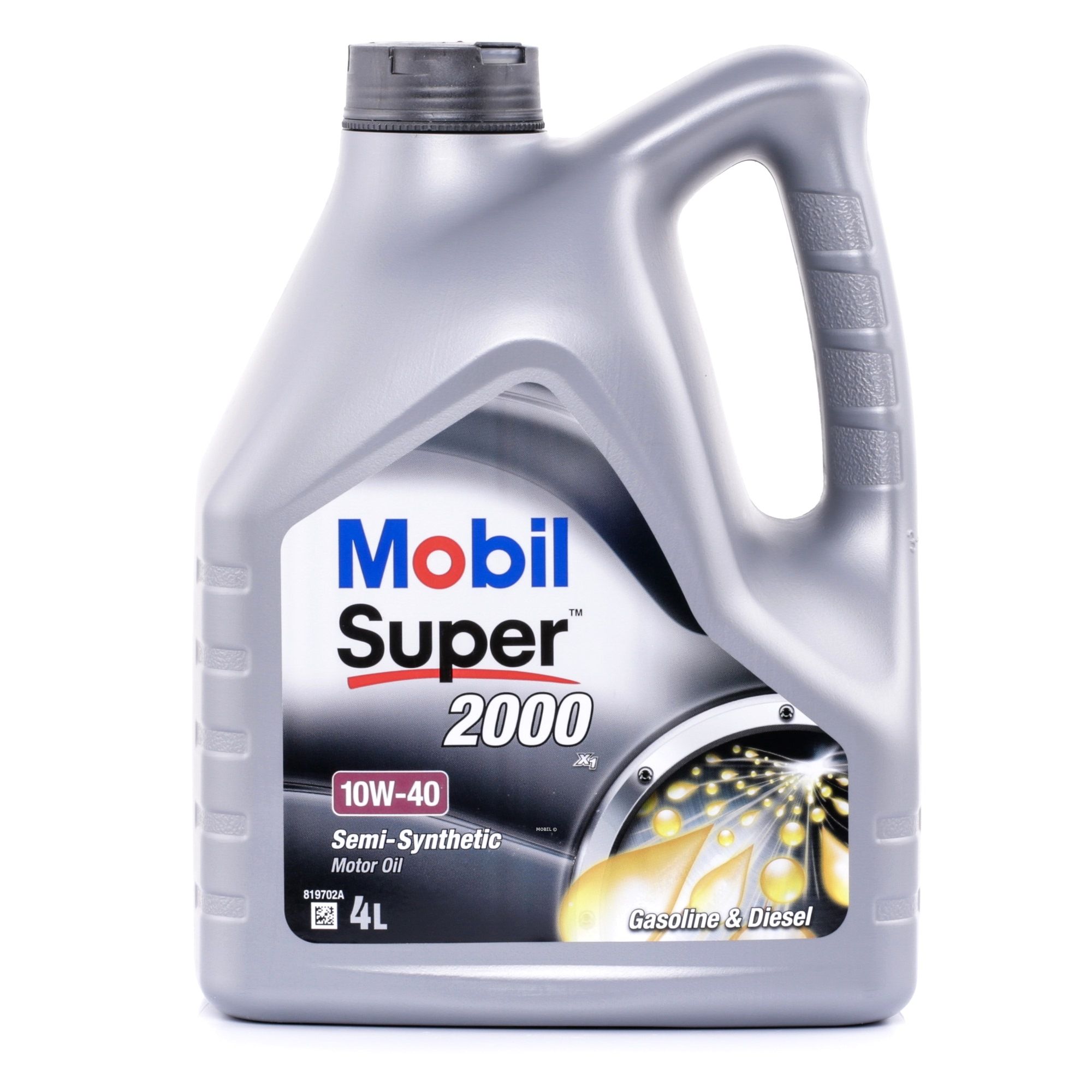Table of Contents
Nissan Micra engines
The Nissan Micra has become one of the most popular small cars since its introduction in 1982, offering a diverse Nissan Micra engine range across five generations. Each generation has brought new technologies and different strengths and weaknesses, with technological evolution ranging from simple naturally aspirated engines to modern turbocharged engines.

Nissan Micra engines: Generation I-III (1982-2010) - Historical generations

The first three generations of the Nissan Micra (K10: 1982-1992, K11: 1992-2002, K12: 2003-2010) characterized the brand as a reliable small car with economical engines. These historic Nissan Micra engines easily reached 250,000 to 350,000 kilometers with proper maintenance, whereby the proven 1.0 and 1.3-liter naturally aspirated engines were considered to be particularly durable. Major engine damage was rare, with major repairs to the clutch or gearbox usually only occurring after 200,000 kilometers. The absolute top engine of this era was the 1.3-liter engine of the K11 generation with 75 hp, which optimally combined power, reliability and economy. The early generations competed successfully with the VW Polo and Opel Corsa due to their reliability and low maintenance costs.
Nissan Micra gasoline engines: Generation I-III (1982-2010)
The Nissan Micra petrol engine range of the historical generations mainly comprised small naturally aspirated engines. In the K10 generation (1982-1992), the 1.0-liter engine with 50-54 hp was the standard, supplemented by a 1.2-liter with 60 hp. The K11 generation (1992-2002) brought more modern engines: 1.0-liter with 60 hp, 1.3-liter with 75 hp and a sporty 1.4-liter with 82 hp. These Nissan Micra engines were considered to be very reliable, with only occasional problems with the ignition system after high mileage. The K12 generation (2003-2010) introduced more modern technology: 1.2-liter with 65-80 hp, 1.4-liter with 88 hp and, for the first time, a 1.6-liter with 110 hp. The best engine of these historic generations was the 1.3-liter of the K11 generation - robust, economical and durable.
Nissan Micra diesel engines: Generation I-III (1982-2010)
Diesel engines were rare in the early Nissan Micra generations. Only in the K12 generation (2003-2010) was there a 1.5 dCi diesel engine with 68-86 hp. This Nissan Micra diesel proved to be economical (4.2-4.8 l/100km), but was prone to problems with the injection system and turbocharger. The distribution was low, as most customers preferred the proven gasoline engines.
| Nissan Micra engine | Power output | Fuel consumption | Typical weaknesses | Rating |
|---|---|---|---|---|
| 1.0 naturally aspirated engine (K10/K11) | 50-60 HP | 5.5-6.5 l/100km | Ignition system after 200,000 km | Very good |
| 1.2 naturally aspirated engine (K10/K12) | 60-80 HP | 5.8-6.8 l/100km | Very robust | Very good |
| 1.3 naturally aspirated engine (K11) | 75 HP | 6.0-6.5 l/100km | Practically trouble-free | Very good |
| 1.4 naturally aspirated engine (K11/K12) | 82-88 HP | 6.2-7.0 l/100km | Occasional valve clearance | Good |
| 1.6 naturally aspirated engine (K12) | 110 HP | 6.8-7.5 l/100km | Higher wear | Good |
| 1.5 dCi diesel (K12) | 68-86 HP | 4.2-4.8 l/100km | Injection system, turbocharger | Average |

Nissan Micra engines: Generation IV (2010-2017)

The fourth Nissan Micra generation (K13) marked a turning point in engine development and was considered less reliable than its predecessors. Most engines of this generation reached 200,000 to 280,000 kilometers with proper maintenance, with the 1.2-liter engine with 80 hp being considered the most reliable. Problems occurred more frequently than with its predecessors, particularly with the continuously variable CVT automatic transmission, which required costly repairs after just 100,000 kilometers. The absolute highlight was the 1.2-liter naturally aspirated engine with 80 hp - a proven power unit with a good balance between performance and consumption. This generation competed with more modern rivals such as the Ford Fiesta and Peugeot 208, but could no longer maintain the reliability standards of its predecessors.
Nissan Micra petrol engines: Generation IV (2010-2017)
The Nissan Micra petrol engine range of the K13 generation comprised three main engines: the 1.2-liter naturally aspirated engine with 80 hp as standard power, a smaller 1.2-liter with 68 hp for the entry-level range and a turbocharged 1.2 DIG-S with 98 hp. The Nissan Micra 1.2-liter with 80 hp proved to be the most reliable engine of this generation, with only occasional throttle problems after high mileage. The turbocharged 1.2 DIG-S was technically interesting with supercharging and turbocharging, but showed more frequent problems with the complex turbocharging and was prone to coking. All Nissan Micra engines of this generation suffered from the problematic CVT automatic transmission, which impaired the driving experience.
Nissan Micra diesel engines: Generation IV (2010-2017)
The only Nissan Micra diesel of this generation was the tried and tested 1.5 dCi with 90 hp, which was already known from the K12 generation. This Nissan Micra diesel continued to offer good fuel economy (4.5-5.2 l/100km), but was still prone to problems with the high-pressure injection system and turbocharger, especially on short journeys. Demand for diesel engines in the small car segment fell significantly in this generation.
| Nissan Micra engine | Power output | Fuel consumption | Typical weaknesses | Rating |
|---|---|---|---|---|
| 1.2 naturally aspirated engine | 68-80 HP | 5.2-6.0 l/100km | Throttle valve, CVT gearbox | Good |
| 1.2 DIG-S | 98 HP | 4.9-5.5 l/100km | Turbocharging, coking, CVT | Average |
| 1.5 dCi | 90 HP | 4.5-5.2 l/100km | Fuel injection system, turbocharger | Average |

Nissan Micra engines: Generation V (2017-today)

The current Nissan Micra generation (K14) brought a complete realignment of the engine range and is considered to be significantly more reliable than its predecessor. With proper maintenance, most engines of this generation easily reach 250,000 to 300,000 kilometers, whereby the 1.0-liter engine with 71 hp is considered to be particularly durable. Major engine failures have become rare and the CVT automatic transmission has been replaced by a conventional manual gearbox. The absolute top engine is the 0.9 IG-T with 90 hp - a modern three-cylinder turbo engine with impressive power delivery. This generation competes successfully with the VW Polo and Ford Fiesta thanks to its combination of reliability, equipment and driving dynamics.
Nissan Micra petrol engines: Generation V (2017-today)
The current generation Nissan Micra petrol engine range comprises three main engines: the 1.0-liter naturally aspirated engine with 71 hp as the base engine, the turbocharged 0.9 IG-T with 90 hp and the powerful 0.9 IG-T with 117 hp. The Nissan Micra 1.0-liter with 71 hp developed into the most reliable engine of this generation - simple in design, low-maintenance and practically trouble-free. The 0.9 IG-T with 90 hp offers an excellent balance between performance and consumption, but occasionally shows problems with the ignition system at high mileages. The most powerful 0.9 IG-T with 117 hp is sporty and efficient, but can develop problems with turbocharger ventilation when driven aggressively.
| Nissan Micra engine | Power output | Fuel consumption | Typical weaknesses | Rating |
|---|---|---|---|---|
| 1.0 naturally aspirated engine | 71 HP | 5.0-5.8 l/100km | Practically trouble-free | Very good |
| 0.9 IG-T | 90 HP | 4.9-5.6 l/100km | Occasional ignition system | Good |
| 0.9 IG-T Sport | 117 HP | 5.2-6.0 l/100km | Turbocharger ventilation | Good |

Conclusion: The best Nissan Micra engines of all generations
The development of Nissan Micra engines shows an interesting evolution - from the extremely reliable naturally aspirated engines of the early generations to the problematic K13 generation and the improved current generation. The historic generations set standards for reliability, while the modern generation impresses with efficient turbocharged engines.
- Best Nissan Micra gasoline engine:
The 1.3-liter naturally aspirated engine (75 hp, Generation II) combines legendary reliability with ample power and the lowest maintenance requirements.
- Best modern Nissan Micra engine:
The 1.0-liter naturally aspirated engine (71 hp, Generation V) offers the best combination of reliability, economy and everyday usability of the current generation.
- Best Nissan Micra turbo engine:
The 0.9 IG-T (90 hp, Generation V) with its good balance between performance, fuel economy and reliability.
For maintenance and spare parts for all Nissan Micra generations, AUTODOC offers a comprehensive range of original and quality spare parts with fast delivery.
TOP Products on the topic:















